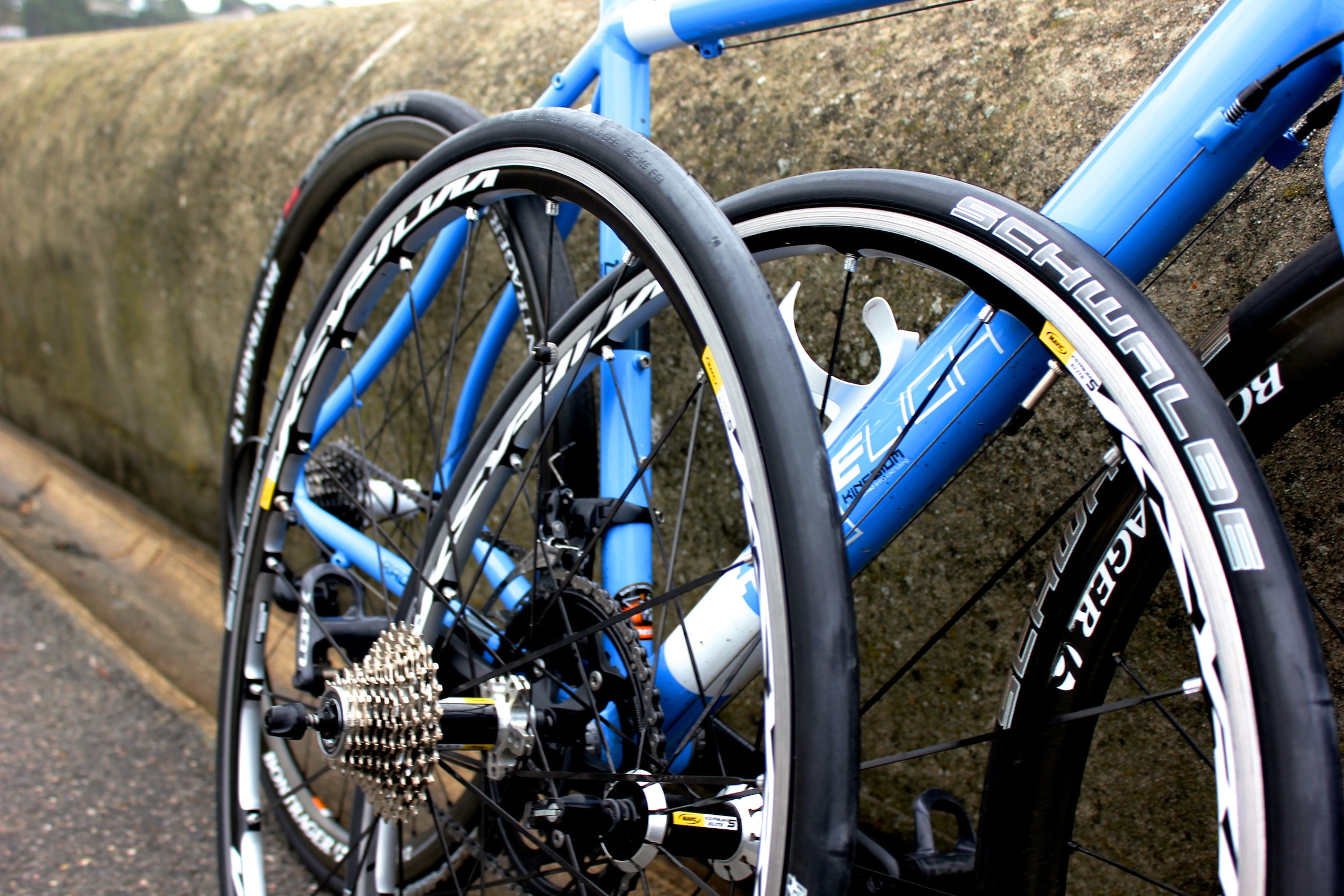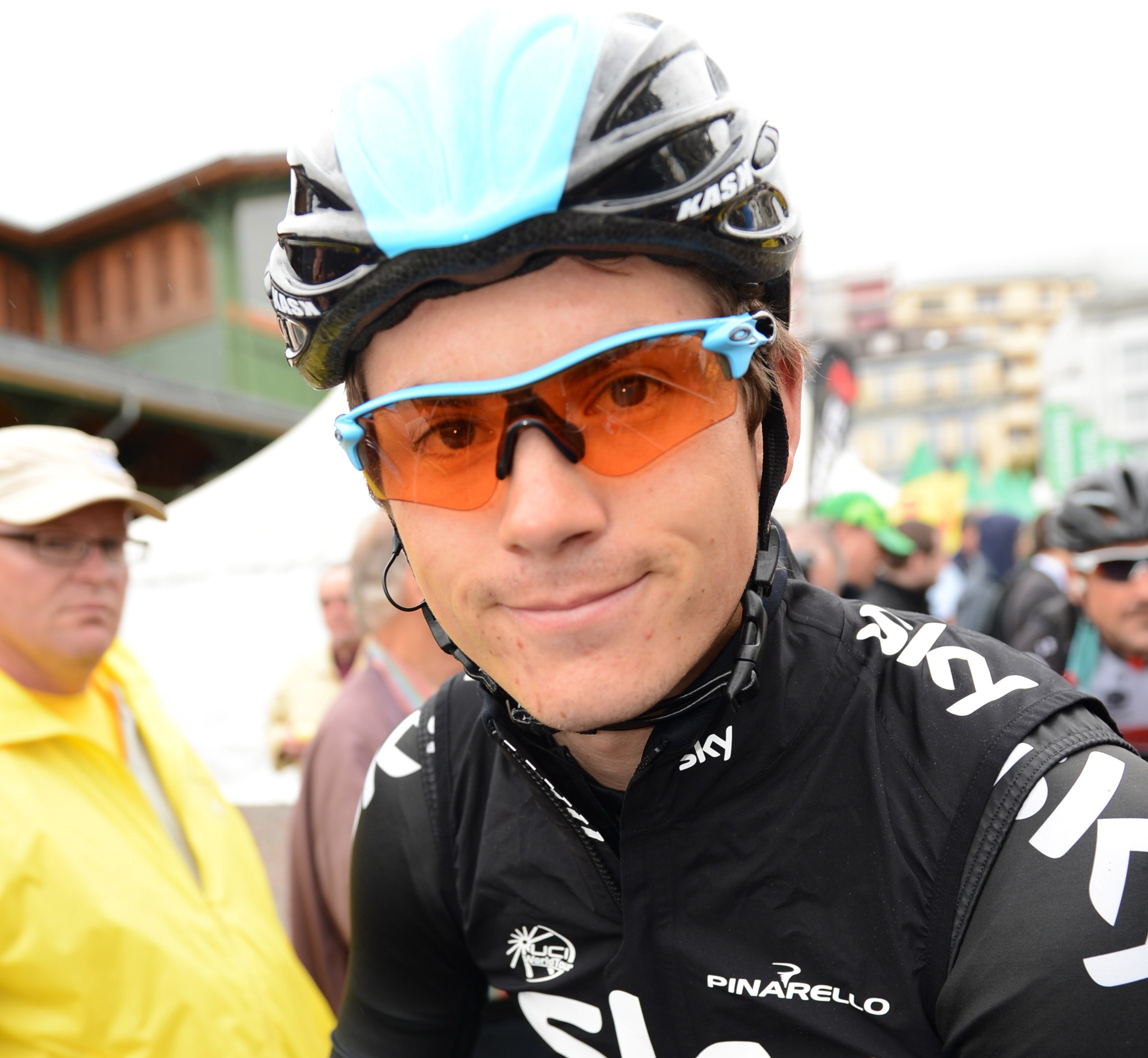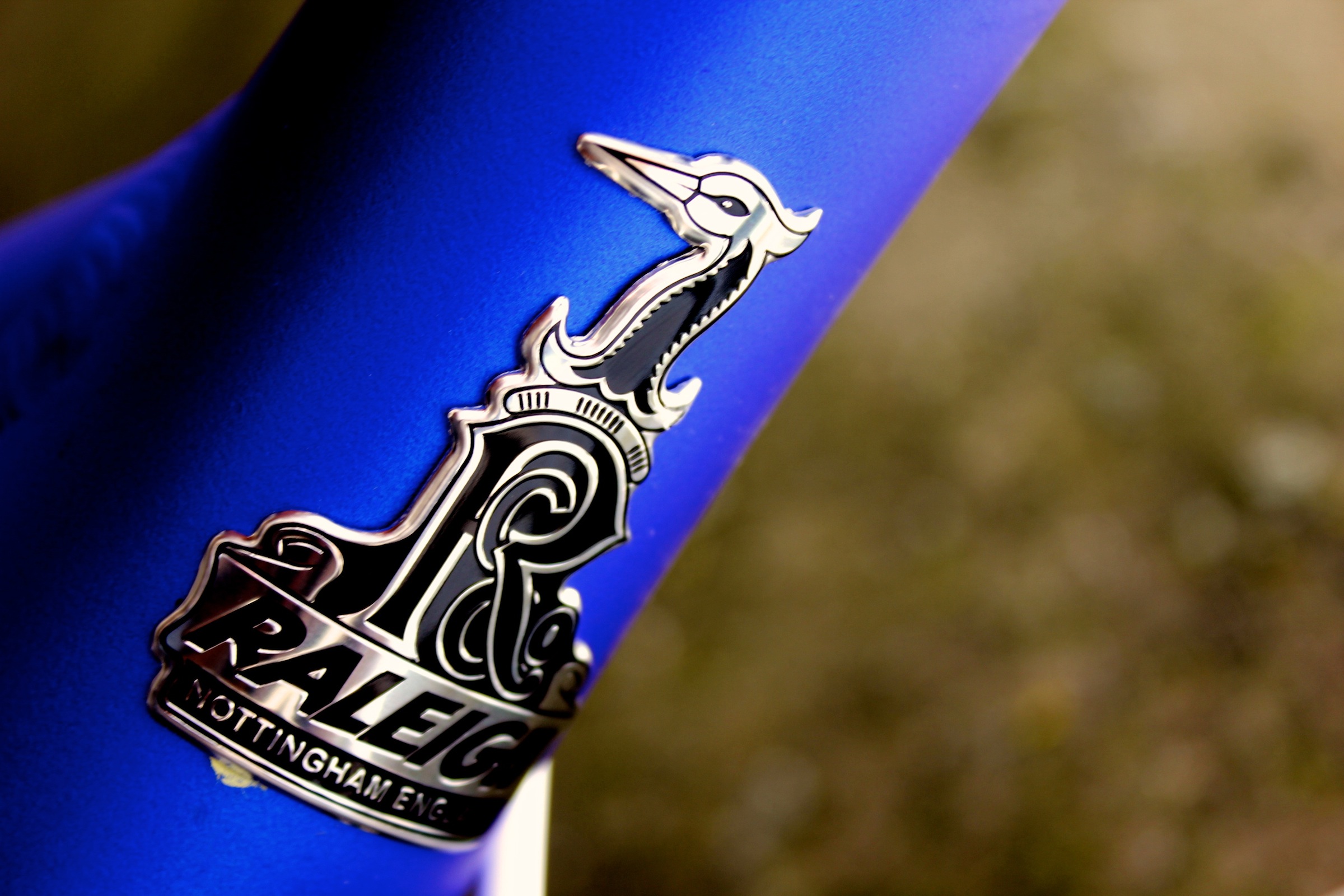The Orbea Orca GTH is a lightweight machine, with a no-corners-cut specification, but its uncompromising race-oriented geometry makes it a bike only for the athlete.
We took a ‘first look’ at the Orca GTH a month ago, and have racked up some serious miles on it since.
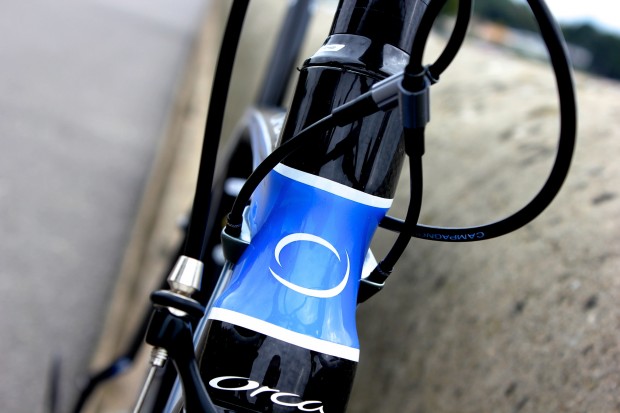
The chassis
The Orca GTH is fashioned from the Spanish brand’s ‘gold’ standard carbon fibre, and given that the components, while from respected suppliers, are from the mid-range of each, is surely the primary contributor to its featherweight 6.8kg footprint – the UCI’s legal minimum. The low weight is still more significant given that the Orca GTH is an aero bike: one with a heavily sculpted tubeset intended to cheat the wind; a design that typically requires more material and so adds heft.
Riders seeking a geometry for all-day comfort should look away now; racers, however, will find much to admire. The front triangle of our 51cm test bike was comprised of a 46cm seat-tube, 53.5cm toptube, and 120mm headtube. Think ‘long and low’. If you’re sufficiently supple to ride for hours in the flat-backed, elbows bent style of the WorldTour peloton, the Orca GTH will be a willing helpmeet. The tube lengths were the primary contributor to the uncompromising feel of the Orca GTH, despite the relatively conservative angles: a 72.1 degree head angle, and a seat angle of 73.5 degrees.
Our last point on the chassis concerns their aforementioned ‘aero’ profile. Until RCUK Towers is equipped with a wind tunnel (not expected in the immediate future), we’ll be unable to offer an opinion on the performance of truncated kamm tails and their ilk. As a rule of thumb, we remain sceptical about the real world benefits of data derived from wind tunnels. Suffice to say that riding into a headwind on the Orca GTH still felt like riding into a headwind. Aesthetically, however, the aggressively styled tube profiles gave it a striking appearance; one that drew approving comments from almost all who saw it.
The ride
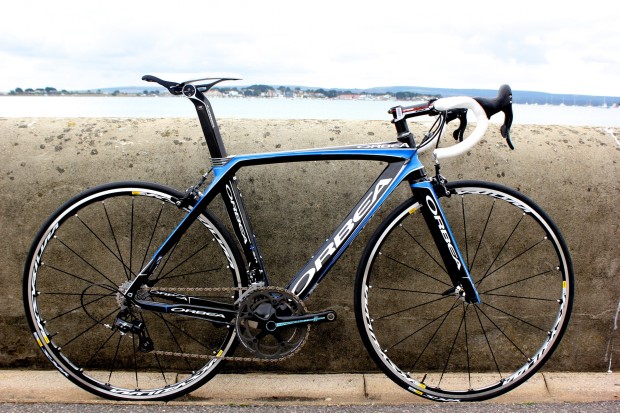
We rolled out on the Orbea Orca GTH under no illusion that we were testing anything other than a racing bike. Even by the standards of some of the speed-oriented steeds to cross our threshold this year (the Bianchi Sempre Pro, Specialized Tarmac SL4, Giant TCR Advanced SL4, to name just three), the riding position of the Orca GTH felt aggressive. Much of this was owed to the very long top-tube, which made for a riding position which was far from comfortable, and if you’re considering a bike for anything other than racing duties, we’d advise you to look elsewhere.
Despite its low weight, the Orca GTH wasn’t an especially impressive climber; surprising, given its deployment with the Spanish Euskaltel-Euskadi WorldTour squad of Anton, Nieve, Sanchez et al. Having tipped our scales at 6.8kg, its comparative tardiness on upward gradients clearly lay elsewhere. The long top-tube offered no assistance when sat up and riding on the ‘tops’ of the handlebars, leaving us feeling stretched despite taking up a position on the nose of the saddle. When climbing out of the saddle, we were forced to lean forwards, rather than riding in our customary upright position (one that in our more deluded moments we imagine resembles the climbing style of Alberto Contador).
On flat roads, the geometry was a help rather than a hindrance, placing us in a low, flat-backed position that encouraged us to ride for long periods on the drops; the stretch required to ride on the hoods was less comfortable. The steering was very direct on any terrain, but demanded attention on the descents, where the combination of low stack height and narrow bars made it easy to wobble.
The choice of a 53-39 chainset and 11-25 cassette is entirely understandable for a machine designed so obviously for the purpose of racing, but did little to endear the Orca GTH to us on our hillier test routes, and only highlighted its lack of climbing prowess.
The components
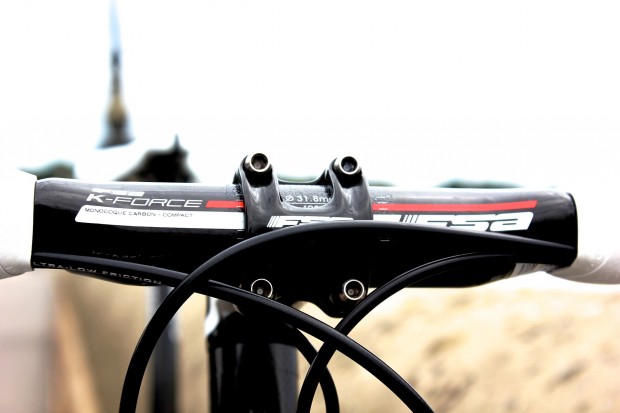
We nodded in approval at a specification in which precisely no corners had been cut as we unboxed the Orca GTH. The bike is refreshingly free of generic or house-branded components. The wheelset is among our favourites and frequently recommended in the RCUK Forum as an upgrade to less expensive bikes than this, and the Campagnolo Athena groupset was deployed in full. How then did all this perform?
The Athena drivetrain functioned in a manner perhaps best described as quintessentially Campagnolo, and your love or otherwise for the brand’s idiosyncrasies will decide whether you consider this a good thing (“vinyl, not digital” quoth RCUK’s Peter Lovell, who intended his observation as a compliment). Shifting down the 11-speed cassette was achieved with the Italian brand’s signature ‘clunk’; changes at the front, made across a ‘classic’ 53-39 chainset, were similarly positive. Campagnolo’s thumb-operated buttons on the inside of the lever hood are unequivocally a good thing in our opinion, the most ergonomically intuitive mechanism from any of the big three component manufacturers. Greatest praise, however, must go to the brakes, which offered excellent modulation and real bite.
The Athena drivetrain performed in a manner perhaps best described as quintessentially Campagnolo, and your love or otherwise for the brand’s idiosyncrasies will dictate whether you consider this a good thing
We’re unashamed fans of Mavic’s Ksyrium Elite S wheelset, and those supplied with the Orca GTH performed in the manner to which we’ve grown accustomed from their deployment in other machines: stiff, true, and responsive. Our time with the Orca GTH coincided with a prolonged period of rain, however, and our satisfaction with Mavic’s hoops was matched only by our dissatisfaction with their rubber (Yskion Pro Powerlink at the rear; Griplink at the front), which offered very little grip in the wet.
Finishing kit is largely a matter of personal taste, and not much of that installed on teh Orca GTH coincided with ours. The Selle Italia SLR saddle, supplied here with a single, central ‘monolink’ saddle rail, was among the least comfortable we’ve experienced, although Orbea’s conversion kit for its aero-profiled carbon post should allow it be replaced without difficulty. The 40cm, carbon fibre FSA K-Force handlebar didn’t trouble this correspondent and was well matched to our 51cm frame, but perhaps not everyone will welcome it, despite the propensity of Chris Froome and other WorldTour luminaries to narrower bars. The carbon effect of the FSA OS-99 CSI stem looked pretty enough and performed its limited role without complaint.
Conclusion
The Orbea Orca GTH is an unashamed racing bike and may suit flat-land power houses able to drive serious wattage through its uncompromised gear ratios. Orbea are to be applauded for delivering a machine with such an impressive and comprehensive specification for just under £4,200.
Despite its impressive performance on the scales, and the enviable completeness of its specification, the very aggressive position inspired by the Orca GTH’s geometry will limit its appeal to riders of a specific style, and we’d strongly advise a policy of trying before buying.
Price: £4,199
Size: 48, 51, 53, 55, 57, 60
Colour: Blue and black
Website: Orbea


